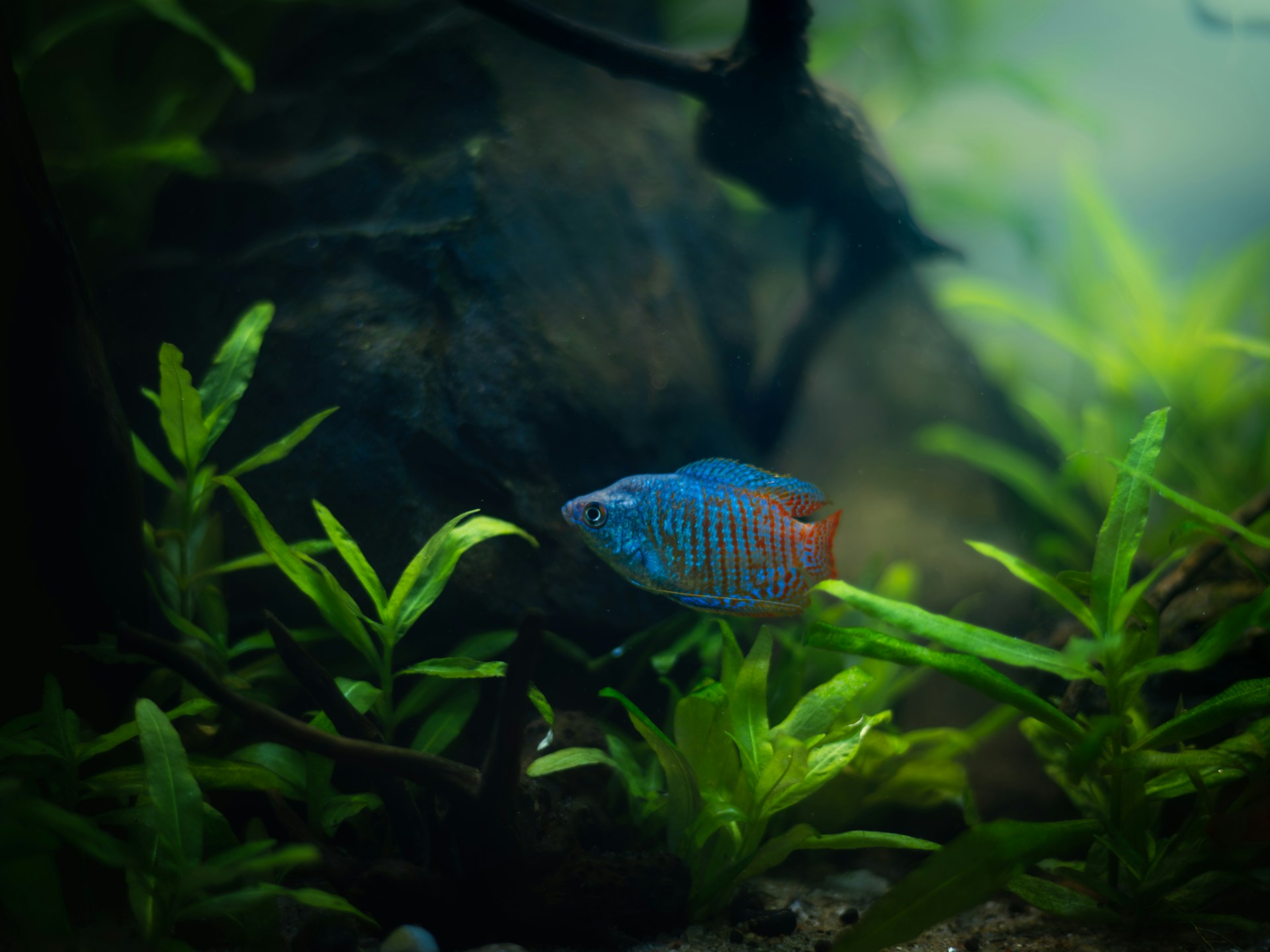Last Updated on February 18, 2024 by Dustin
Imagine a scene: shimmering, jewel-toned fish glide gracefully through a miniature underwater jungle. Sunlight filters through the leaves, casting dappled patterns on the sandy bottom. But wait, what’s that nestled amongst the greenery? A hidden cave, offering a glimpse into a mysterious world. Ah, the life of a dwarf gourami! But beyond the aesthetic appeal, do these captivating creatures truly appreciate having a cave in their aquatic haven? Dive in with us, fellow aquascapers, as we unveil the secrets of caves and their allure for our finned friends.
Basic Dwarf Gourami Stats:
- Size: 2-3 inches (5-8 cm)
- Water temperature: 75-80°F (24-27°C)
- pH: 6.0-7.5
- Diet: Omnivorous
- Minimum tank size: 10 gallons (38 liters) for a single dwarf gourami
Unlock the Beauty: Unveiling the Benefits of Caves
While caves undoubtedly add a touch of natural beauty to your aquarium, their significance for dwarf gouramis goes far deeper. Caves offer a multitude of benefits for these intriguing fish:
- Security and Comfort: Dwarf gouramis, despite their peaceful nature, can be shy and stressed, especially in brightly lit tanks. Caves provide a sense of security and a retreat from overwhelming stimuli, encouraging exploration and reducing hiding behaviors.
- Breeding Sanctuary: Male gouramis build elaborate bubble nests for spawning, often preferring the shelter and privacy offered by a cave. Providing this safe haven can increase breeding success and reduce stress for the pair.
- Territorial Boundaries: In community tanks, caves can help establish territories and reduce aggression between males, creating a more harmonious environment.
Choosing the Right Cave: Not Just Looks, But Functionality
Not all caves are created equal! When selecting a cave for your gouramis, prioritize functionality over aesthetics:
- Size: Ensure the cave is large enough for your gourami to enter and exit comfortably.
- Material: Opt for smooth, non-toxic materials like ceramic or driftwood to avoid injuries.
- Multiple Entrances: Caves with multiple openings offer escape routes and prevent feeling trapped.
- Placement: Position the cave strategically, providing easy access and avoiding dead zones in the water flow.
Remember, observation is key. Monitor your gouramis’ behavior and adjust the cave’s placement or type if needed. Resources like Home Aquarium Supplies offer a wealth of information on dwarf gourami care, including specific recommendations for tank decorations and accessories. Our guides can help you create a haven that caters to their natural instincts and promotes their overall well-being.

In Conclusion: A Sanctuary Awaits
So, do dwarf gouramis like caves? The answer is a resounding yes! Caves offer more than just a decorative element; they provide security, comfort, and even contribute to breeding success. By making informed choices and tailoring the environment to their needs, you can unlock a world of happiness and well-being for your shimmering jewels. Now, tell me, what other questions do you have about creating the perfect underwater paradise for your captivating dwarf gouramis? Here are some of the common questions and answers about dwarf gourami tanks.
Dwarf Gourami Q&As:
Q. Do I need to clean the cave?
A. Yes, regularly remove debris and algae buildup from the cave to maintain water quality.
Q. Do they need live plants?
A. Live plants are beneficial for providing hiding spots, improving water quality, and offering grazing opportunities.
Q. My gourami doesn’t use the cave!
A. Give it time to adjust. Ensure the cave is properly placed and consider its size and material.
Q. Can I have more than one cave?
A. Multiple caves can be beneficial, especially in larger tanks or community setups.
